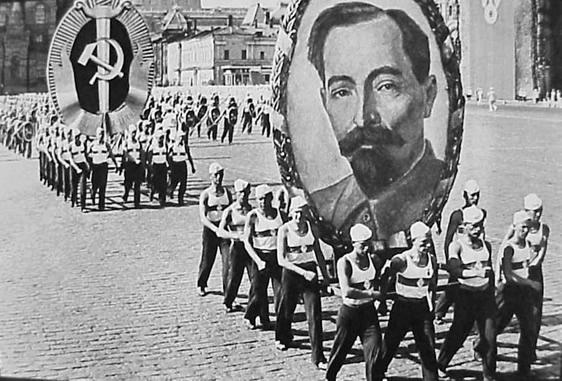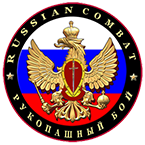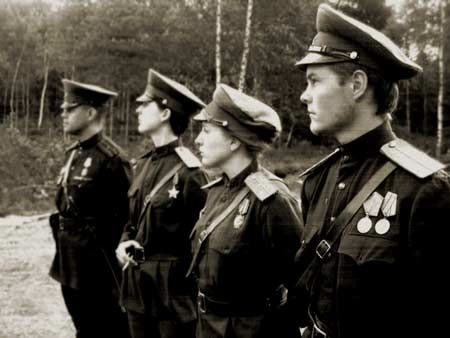
The first Soviet Union security organization called “Cheka”. In December of 1917 the Cheka, an acronym for the All-Russian Extraordinary Commission for Combating Counter-Revolution and Sabotage, was established. By 1918 under the rule of die-hard Polish Bolshevik Felix Derzhinsky the Cheka became the most feared institution in the whole course of the Russian Civil War.
In 1922, The Cheka was reorganized under the apporatis of the GPU, soon to be known as the OGPU. The founding father Felix Derzhinsky died in 1926 of supposed natural causes. His statue was a common sight in Red Square until 1991. As the Soviet Union fell under the rule of Stalin the secret police gained unprecedented control.
By 1929 Stalin had decided to liquidate the kulak as a class and to once and for all destroy Ukrainian Nationalist feeling. Thus, collectivization and forced famine began. Million were deported by OGPU agents, hundreds of thousands executed for even the slightest resistance. In 1933, Stalin caused a forced famine that killed millions. It is said that 14.5 million died from 1929-1933 as a result of the collectivization polices. In 1934, the OGPU was reorganized under the acronym NKVD (People’s Commissariat For Internal Affairs). Stalin gave it unrestricted control the organization was to be responsible only to himself. At its head was Genrik Yagoda a spiteful and evil man. In December 1934 the Terror that was unknown to the masses till then began.
Sergei Kirov, Stalin confidant and Leningrad part chief was assassinated, probably by Stalin. Stalin used Kirov death as a pretext to launch a reign of Terror in The Soviet Union that was to last until 1939. In the last month of 1934 nearly a thousand people who were thought to have a connection with the Kirov plot were shot by the NKVD thousands more were deported to the GULAG camps of Siberia also run by the NKVD. By 1936, the full horror of the Terror began.
Party comrades Zinovev, and Kamenev were the first to be executed. The NKVD targeted many other Party Members of upper echelons. Yagoda himself was purged for irrational reasons and replaced by a five foot Nikolai Yezhov, he would be known as the “bloody dwarf,” his era would be called Yezhovschina, or time of Yezhov. Yagoda was executed and Yezhov given free reign by Stalin in 1937. The Terror reached its height. The NKVD arested and shot millions the whole upper officer corps was purged. In 1938 Yezhov himself was replaced by Laverti Beria, a close friend of Stalin. Beria purged the NKVD itself as had Yezhov and saw to it that Yezhov was executed.
By 1946, the NKVD was reorganized again and numerous times more until it was to be known under the all too familiar abbreviation the KGB. Yet, its duties and methods were to remain much the same until the deaths of Beria and Stalin in 1953. Premier Nikita Khruschev deprived it of many of its privileges,and Terror was no longer used as a political method but, the memory of it would forever haunt the people.
History of the NKVD
The first Soviet Union state security organization, the Vecheka, was created on 20 December 1917.
The Vecheka (All-Russian Extraordinary Commission for Combating Counter-revolution and Sabotage) is more commonly known as the Cheka.
1918 The NKVD (People’s Commissariat of Internal Affairs) had been formed to control the police department, criminal investigation departments, fire brigades, internal troops, and prison guards. 1922 With the end of the civil war and the resulting period of stabilization, the Cheka was transformed, on 8 February 1922, into the GPU (State Political Directorate) which was subordinated to the NKVD.
1923 With the formation of the USSR in 1923 the GPU became the OGPU (Unified State Poltical Directorate) and was upgraded to an independent directorate of the Soviet Council of People’s Commissars (i.e. it was removed from NKVD control).
1934 In 1934 the OGPU was transformed into the GUGB (Chief Directorate of State Security) which was subordinated into the new All-Union NKVD. This marked the beginning of Soviet state security’s most powerful and autocratic period. All key aspects of internal and state security were now subordinated into one body under one leader – at first G.G. Yagoda, then, from 27 September 1936, N.I. Yezhov, and finally, from 25 November 1938 Lavrentii Beria. In 1934 the NKVD was organized as follows: – GUGB (Chief Directorate of State Security) – GUPVO (Chief Directorate of Frontier Guards and Interior Troops) – GULAG (Chief Directorate of Camps) – GUM (Chief Directorate of the Militia) – other units responsible for Fire Fighting, Local Anti-Aircraft Defence, Highway Construction, Archives, etc. .
1939 On 2 February 1939 the GUPVO was divided into 6 Chief Directorates: – GUPV (Chief Directorate of Frontier Guards) – GUKV (Chief Directorate of Convoy Troops) – GUVOVPGO (Chief Directorate of Troops for Guarding Industry and State Facilities) – GUZhV (Chief Directorate of NKVD Railroad Troops) – GUInzhV (Chief Directorate of NKVD Engineer Troops) – GUIntV (Chief Directorate of the NKVD Intendants Service) – GUOV (Chief Directorate of Operational Forces) since 1940.
On February 3rd 1941, Decree 149 of the CPSU Politburo removed the GUGB from the NKVD and elevated to equal People’s Commissariat status creating the NKGB. The NKGB was led by V.N. Merkulov, Beria’s former deputy, who remained a loyal lackey. The new NKGB was responsible for – external espionage, – counter-espionage throughout the USSR3) – operations to find and liquidate anti-Soviet parties and counter-revolutionary formations in the USSR – guarding the leaders of the party and state. The NKGB organization was created at all levels (All-Union down to Oblast, Krai and Raion).
The NKGB was divided into:
- UR (Directorate of Intelligence)
- UK (Directorate of Counter-Intelligence)
- USP (Secret-Political Directorate)
- UKMK (Directorate of the Kommendant of the Moscow Kremlin)
1941 The NKGB’s independence was short lived. In late June 1941, after the German invasion, the NKGB was resubordinated into the NKVD as the GUGB to ensure closer control of the nation’s security apparatus during this chaotic time.
1943 In April 1943, after the military situation had changed in favour of the USSR, the GUGB was again removed from the NKVD and became the NKGB. This time the change lasted until the birth of the MGB in 1946.
1946 In March 1946 the Soviet government was restructured and all People’s Commissariats (NK) were redesignated Ministries (M). Thus the NKVD became the MVD and the NKGB became the MGB. Merkulov was replaced as head of the new MGB by V.S. Abakumov, S.N. Kruglov replaced Beria as head of the MVD, and Beria became a full member of the Soviet Politburo and a deputy chairman of the Council of Ministers exercising full control over the MVD and MGB. 1953 On 6 March 1953, the day after Stalin died, Beria succeeded in uniting the MVD and MGB into one body, the MVD. 1954 On 13 March 1954, after Beria’s fall, ” secret trial”, and execution, the monster unified MVD was again split up. The reformed MVD retained its traditional policing and internal security functions while the new KGB took on the state security functions of the MGB. The KGB was subordinated to the USSR Council of Ministers, the Soviet Cabinet.
There always was a state security service within the Soviet Union. From the very birth of the Soviet state. In December of 1917 the Cheka, an acronym for the All-Russian Extraordinary Commission for Combating Counter-Revolution and Sabotage, was established. By 1918 under the rule of die-hard Polish Bolshevik Felix Derzhinsky the Cheka became the most feared institution in the whole corse of the Russian Civil War. The Cheka executed men women and children under any suspicions whatsoever. Most estimates say that around three hundred thousand people perished under the Cheka, which was known as the avenging angel of the Revolution; however, it is quiet possible the actual number of deaths was over one million. The Cheka was made up of minorities a large number of Latvia’s, Jews, and Finns. Ethnic tensions of minorities that had suffered under conservative czarist russification made the tasks all the easier.The Cheka was also head of large numbers of concentration camps in which thousands perished.
In 1922, The Cheka was reorganized under the apporatis of the GPU, soon to be known as the OGPU. The founding father Felix Derzhinsky died in 1926 of supposed natural causes. His statue was a common sight in Red Square until 1991. As the Soviet Union fell under the rule of Stalin the secret police gained unprecedented control.
By 1929 Stalin had decided to liquidate the kulak as a class and to once and for all destroy Ukrainian Nationalist feeling. Thus, collectivization and forced famine began. Million were deported by OGPU agents, hundreds of thousands executed for even the slightest resistance. In 1933, Stalin caused a forced famine that killed millions. It is said that 14.5 million died from 1929-1933 as a result of the collectivization polices. In 1934, the OGPU was reorganized under the acronym NKVD (People’s Commissariat For Internal Affairs). Stalin gave it unrestricted control the organization was to be responsible only to himself. At its head was Genrik Yagoda a spiteful and evil man. In December 1934 the Terror that was unknown to the masses till then began.
Sergei Kirov, Stalin confidant and Leningrad part chief was assassinated, probably by Stalin. Stalin used Kirov death as a pretext to launch a reign of Terror in The Soviet Union that was to last until 1939. In the last month of 1934 nearly a thousand people who were thought to have a connection with the Kirov plot were shot by the NKVD thousands more were deported to the GULAG camps of Siberia also run by the NKVD. By 1936, the full horror of the Terror began.
Party comrades Zinovev, and Kamenev were the first to be executed. The NKVD targeted many other Party Members of upper echelons. Yagoda himself was purged for irrational reasons and replaced by a five foot Nikolai Yezhov, he would be known as the “bloody dwarf,” his era would be called Yezhovschina, or time of Yezhov. Yagoda was executed and Yezhov given free reign by Stalin in 1937. The Terror reached its height. The NKVD arested and shot millions the whole upper officer corps was purged. In 1938 Yezhov himself was replaced by Laverti Beria, a close friend of Stalin. Beria purged the NKVD itself as had Yezhov and saw to it that Yezhov was executed. The Nazi-Soviet collaboration began and the NKVD and Gestapo worked together on many occasions in Occupied Polish zones.
The NKVD shot over 4000 Polish officer and enlisted men at Katyn forest near Smolensk. When the war with germany began any soldier not willing to fight or on the retreat was shot by NKVD troops. Some NKVD rifle units served with a degree of distinction during The Great Patriotic War namely at Moscow, Leningrad, and Stalingrad. Most of the time they obliterated and executed whole villages that were suspected of German collaboration and deported many minorities to Siberian GULAGS. After the war the German occupied Zone underwent a reign of terror under the NKVD. Three and a half million German POWs were sent to the GULAG only a million were ever heard from again. By 1946, the NKVD was reorganized again and numerous times more until it was to be known under the all too familiar abbreviation the KGB. Yet, its duties and methods were to remain much the same until the deaths of Beria and Stalin in 1953. Premier Nikita Khruschev deprived it of many of its privileges,and Terror was no longer used as a political method but, the memory of it would forever haunt the people.






Leave a Reply